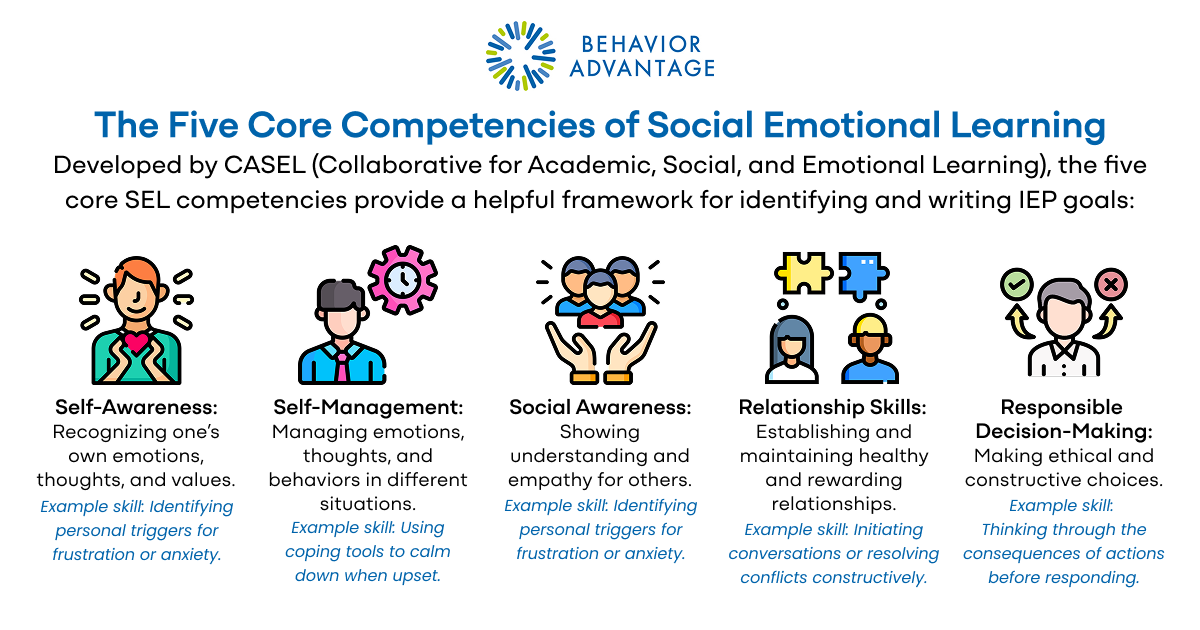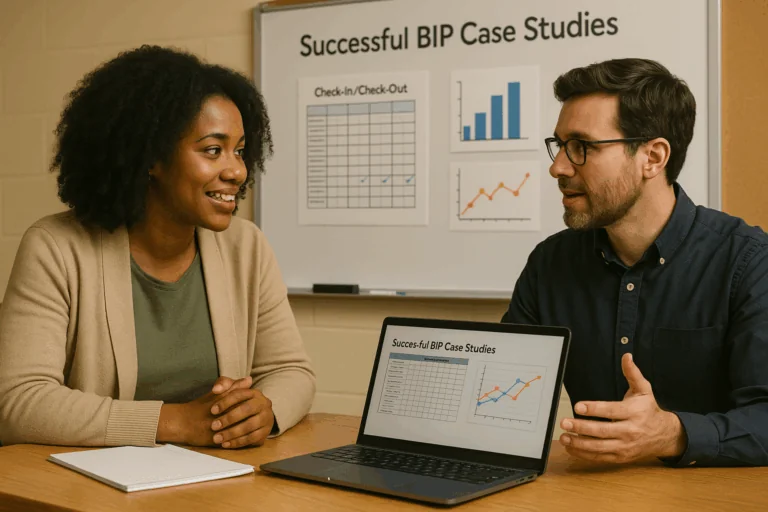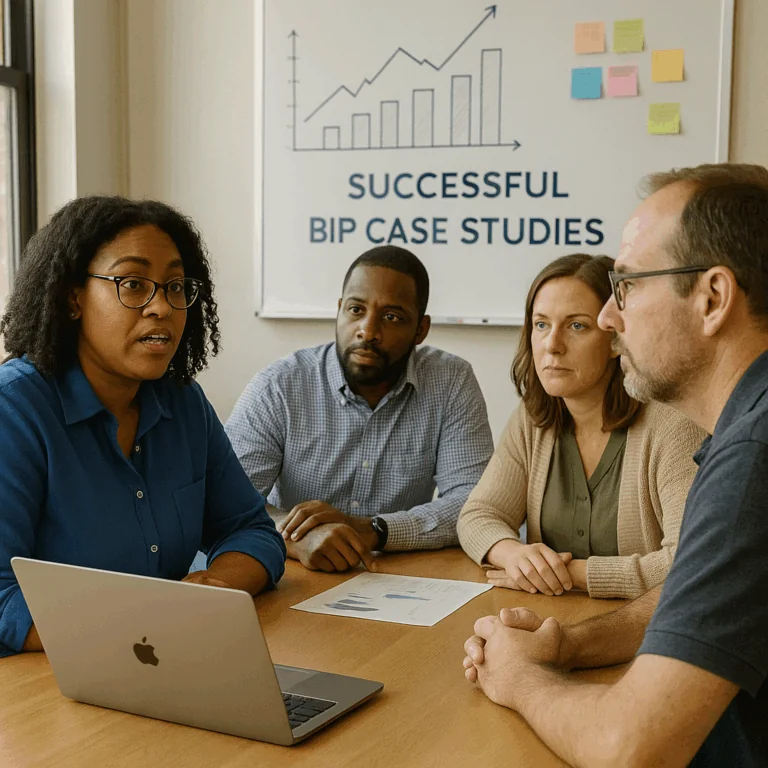Social-emotional learning (SEL) is no longer a “nice-to-have” in today’s schools—it’s a fundamental part of student development and academic success. For students receiving special education services, SEL skills are often at the heart of their Individualized Education Program (IEP), especially when behavior, emotional regulation, or peer interaction is a concern. SEL goals for IEPs help support a child’s ability to navigate relationships, regulate emotions, build resilience, and make responsible decisions. In this article, we’ll explore what SEL goals are, how they align with broader SEL frameworks, and how to write and use them effectively within an IEP.
What Is a Social Emotional Goal for an IEP?
A social-emotional goal in an IEP is a specific, measurable objective designed to help a student build skills in areas such as emotional regulation, social interaction, self-awareness, and decision-making. These goals are typically included when a student demonstrates difficulties in areas that impact their ability to access learning, navigate peer relationships, or manage their emotions or behavior in a school setting.
Example: “Given a stressful classroom situation, [Student] will use one of three taught coping strategies (e.g., deep breathing, asking for a break, or positive self-talk) with 80% success across five trials, as measured by teacher observation and data collection.”
This goal is clear, measurable, and addresses a specific need that aligns with a broader SEL competency.
The Five Core Competencies of Social Emotional Learning
Developed by CASEL (Collaborative for Academic, Social, and Emotional Learning), the five core SEL competencies provide a helpful framework for identifying and writing IEP goals:
- Self-Awareness: Recognizing one’s own emotions, thoughts, and values.
- Example skill: Identifying personal triggers for frustration or anxiety.
- Self-Management: Managing emotions, thoughts, and behaviors in different situations.
- Example skill: Using coping tools to calm down when upset.
- Social Awareness: Showing understanding and empathy for others.
- Example skill: Recognizing how others feel based on body language and tone.
- Relationship Skills: Establishing and maintaining healthy and rewarding relationships.
- Example skill: Initiating conversations or resolving conflicts constructively.
- Responsible Decision-Making: Making ethical and constructive choices.
- Example skill: Thinking through the consequences of actions before responding.
IEP teams can align goals with one or more of these competencies depending on the student’s needs.

What Is an Example of a SMART Goal for SEL?
SMART goals are:
- Specific
- Measurable
- Achievable
- Relevant
- Time-bound
Here’s an example of a SMART SEL goal:
“By the end of the first semester, when feeling overwhelmed in a group activity, [Student] will independently use a pre-taught strategy (e.g., ask for help, take a sensory break) in 4 out of 5 opportunities, as measured by behavior tracking data and staff observation.”
This goal:
- Targets a specific skill (coping strategy when overwhelmed).
- Is measurable (4 out of 5 opportunities).
- Is realistic and achievable based on the student’s present level.
- Is relevant to their challenges in group settings.
- Is time-bound (by end of semester).
If you are looking for advice on how to write IEP Goals, check out our detailed guide.
Examples of Social and Emotional Skills
Here are some social and emotional skills that can be developed through IEP goals:
- Labeling emotions accurately
- Taking turns and sharing
- Asking for help or clarification
- Accepting constructive feedback
- Managing frustration without aggression
- Responding to teasing appropriately
- Demonstrating empathy in peer interactions
- Participating in group discussions
- Using “I” statements to express needs
- Accepting “no” for an answer
Each of these can be taught, practiced, and reinforced as part of the student’s IEP.
If you are having difficulties, our IEP Goal Bank might be the place to start.
Using a Behavior Support Lens: SEL as Replacement Behaviors
From a behavioral perspective, SEL goals can be thought of as teaching replacement behaviors. Many challenging behaviors occur because a student lacks the social or emotional skill to navigate a situation successfully. By identifying what function a behavior is serving (e.g., escape, attention, sensory, access to tangibles), we can select an SEL skill that helps the student get their need met or cope in that situation in a more adaptive, appropriate way.
Example: If a student throws their materials when faced with a difficult task (possibly to escape or avoid), the replacement behavior might be teaching them to request a break, use a “help” card, or verbally express frustration. The related SEL goal would focus on emotional regulation or self-management.
This alignment ensures that behavior intervention plans (BIPs) and IEP goals work in concert to support the student holistically.
Tips for Writing and Implementing SEL Goals for IEPs
- Start with the Present Levels: Use data, observations, and input from teachers or caregivers to describe how the student currently functions socially and emotionally.
- Prioritize Functional Needs: Focus on skills that directly impact the student’s ability to access the curriculum or function successfully at school.
- Involve the Student: When appropriate, ask the student about their challenges and goals. Student voice adds value and ownership.
- Generalize Across Settings: Ensure goals are practiced in various settings (classroom, lunch, recess, specials) to promote real-world use.
- Monitor Progress Regularly: Use checklists, rubrics, or behavior tracking tools to monitor skill use and determine whether supports need to be adjusted.
Final Thoughts
As educators and IEP team members, we must remember that behavior is communication and that SEL skills can offer students the tools they need to express themselves, build connections, and thrive in school. Embedding SEL goals in an IEP isn’t just about compliance—it’s about giving students the tools to succeed socially, emotionally, and academically.
Through both SEL and behavior support lenses, these goals guide us in teaching students how to meet their needs in healthy, prosocial ways. And that is what meaningful education is all about.
Behavior Advantage can help your team select the right tools for helping students.










